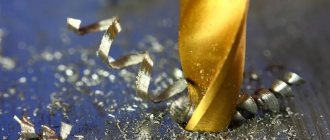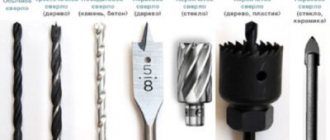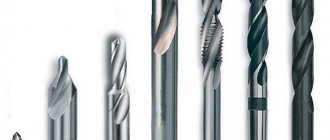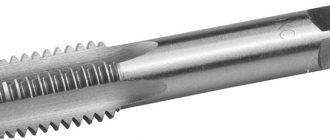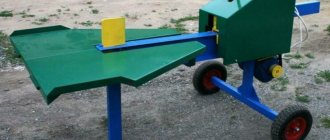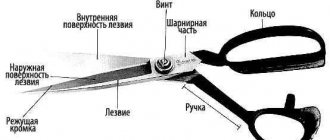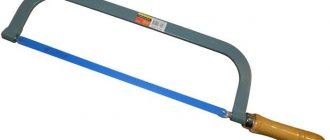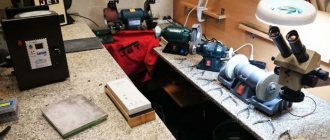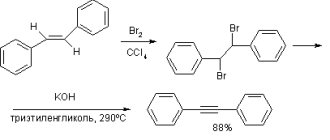AND
Research by RAS professor, professor and head of the materials design laboratory at the Skolkovo Institute of Science and Technology
Artem Oganov
is focused on the use of computational methods in the creation of new materials, studying the behavior of matter at high pressures and the development of new computational methodologies for predicting the structure and properties of materials.
In 2006, together with his student Colin Glass
he created a new method called USPEX (Universal Structure Predictor: Evolutionary Xtallography), which allows one to calculate the structure of a mineral for a given temperature and pressure, based only on the chemical composition. This unique evolutionary method of crystal structure prediction is currently used by more than 4,500 researchers worldwide. This method allows the prediction of new materials, both organic and inorganic, with desired properties and has enabled numerous discoveries in both basic and applied research.
We started our meeting with Artem Romaevich with the question:
— Are you studying, if I formulate correctly, the structures of crystals under different conditions?
— We predict the structure of matter. We predict a structure that is stable under certain conditions. We also predict the structure and composition of those materials that have the properties we need.
— That is, you set any desired properties in a computer algorithm and from this result you unwind the process in the opposite direction?
- Yes, that’s right - we solve inverse problems.
— Do you have competitors in this niche?
— When we started, there were few competitors. Now many people are trying to do this with various successes or failures, but we still hold the palm, and our method is still unbeatable in terms of reliability and speed. And by the number and variety of functions it has.
Structure of the transparent form of sodium
"Forbidden" chemistry
— You often say that you are involved in “forbidden chemistry.” Why is it banned?
— There are rules of classical chemistry that allow the existence of some compounds and prohibit the existence of others. These rules work quite well for a lot of connections. For example, we know that nothing other than NaCl is allowed by classical chemistry for sodium chloride. Sodium chloride is always NaCl. But it turns out that if you go to unusual conditions, such as high pressures, you can get stable crystals of the composition, for example, Na3Cl. This is prohibited in classical chemistry.
In fact, we don’t fully understand why they are formed, but they are formed, that’s a fact. Many of them are metals, and for metals these kinds of rules do not apply. But why they turn out to be metals is also unclear. Because, again from the point of view of classical chemistry, there must be an ionic bond between the Na and Cl atoms, where electrons from the Na atoms completely flow to the Cl atom and are strongly localized there. There shouldn't be a metal connection here. But nevertheless, for some reason it occurs at pressures, even not very high.
— Some physicists believe that everything in chemistry can be explained by physics. That ultimately it all comes down to solving the Schrödinger equation. How do you feel about such statements?
— There is a big difference between the words “explain” and “calculate.” Or “explain” and “predict”. Our predictions and calculations are truly based on the laws of physics, on quantum mechanics, on the solution of the Schrödinger equation or its analogues. But the calculation itself does not provide an explanation. The calculation will predict that at such and such pressures the Na3Cl compound becomes stable. Why is it stable? No answer.
Quantum mechanics operates at a very detailed level. At the level of nuclei and electrons. After all, in chemistry we are accustomed to operating at the level of atoms, each of which has some kind of character. Some atoms are active, some are passive, some atoms like to give up electrons, some like to accept. Some people don’t like to give or receive.
We predict the structure of matter. We predict a structure that is stable under certain conditions. We also predict the structure and composition of those materials that have the properties we need.
If sodium donates an electron, it will have a charge of +1. And if chlorine takes an electron, it will gain a charge of −1. But electrical neutrality must be observed. And we immediately come to the conclusion that only one NaCl compound is possible in a proportion of exactly 1:1, otherwise your balance of charges will not converge. Why does Na3Cl exist then? Should not.
But quantum mechanical calculations confront us with a fact based on solutions to the equations of quantum mechanics. Before the fact, Na3Cl will be stable. But how to explain it from the point of view of the character and disposition of the Na and Cl atoms is not clear. From the point of view of the behavior of atoms known to us, such a substance should not exist.
The laws of physics determine the chemical behavior of elements. The chemical behavior of elements explains the biochemical role of certain molecules. And the biochemical role of certain molecules dictates all processes occurring in living beings. Yes, the laws of physics determine everything. But can the laws of physics explain, for example, what you are thinking about now? It would be quite naive to interpret human behavior on the basis of the Schrödinger equation. This is called reductionism, and it is very limited in its applicability. To explain human behavior, it is still better to use the knowledge about human character that psychological science gives us. And to explain chemical phenomena, we need to use the knowledge about the nature of atoms that chemical science gives us. Work in recent years shows that we do not understand something important in the character of seemingly well-known atoms.
Between the material and immaterial world
— Why do you do science?
- Because it interests me. And because I probably don’t know how to do anything else.
-Have you tried it?
- I didn’t even try. All my life I dreamed of being a scientist and only a scientist. And it never even occurred to me that I could become someone else. With the exception of one period in my youth when I thought about becoming a priest. And at some point I almost became one.
— An interesting balance between this area of knowledge and, let’s say, science that requires evidence.
Structure of metallic sodium chloride NaCl3
- They complement each other. These are different aspects of knowledge of the world, the material world, which is studied by science, and the intangible world. If people operate only in material concepts, then I am afraid that they will not advance far in their development.
Religion is one of the ways of education. Science will not tell you what is good and what is bad. Dostoevsky wrote: “If there is no God, then everything is permitted.” In a purely materialistic picture of the world there is no absolute coordinate system, no absolute criterion of good and evil.
And it is necessary to know what good and evil are. If everything is permitted and you do not introduce restrictions into your life, or any taboos for yourself, then this will not lead to anything good. Without internal discipline a person will not advance far. Each of us has probably encountered a huge number of talented people, of whom nothing came of it as a result. Only because they did not have this inner discipline or what we would call the core.
—What is important to a scientist?
— In science, the most important thing is to be a good scientist. I think that science is one of those aspects of human life where there is a mechanism for proving that you are right, and being right in science does not depend on your regalia or administrative resources.
Yes, the laws of physics determine everything. But can the laws of physics explain, for example, what you are thinking about now? It would be quite naive to interpret human behavior on the basis of the Schrödinger equation.
No one doubts that the geneticists were right and Lysenko was wrong. Why? Because there is experimental evidence that genetics works.
A scientist is a person who seeks truth, not profit.
And truth does not depend on place, time or political situation.
“However, recently there have been a lot of fakes.
- This is a huge problem, a problem in many ways of educating people, a problem of society. Rich countries have a lot of scientists and fierce competition. And only those who can loudly declare themselves and produce some kind of loud result get ahead. But this is no excuse for wanting to invent discoveries that do not exist. There was a recent story in Japan when one lady made a brilliant career. A hot topic - stem cells, high-profile results, plus a woman in science - this is still a symbol. And so she became a national symbol, and then it turned out that her scientific results were fake. And it turned out to be a disaster, the end of her career, the suicide of one of her superiors and a stain on the reputation of the entire institute. In Russia, this problem also exists, but, rather, because of the scientific hierarchy, those same bosses who are always right. And their subordinates get the result that will confirm the boss is right, and the more the boss is wrong, the more the subordinates have to force numbers, facts and common sense in order to earn his approval.
Design features and operation
Unlike some other drills, Pobedit drills do not require sharpening. They initially have the required tip structure (angles) for proper operation.
The cutting part is represented by two “shoulders” of approximately the same width. Where they intersect is the future center of the hole . If their widths are different:
- the diameter of the hole will determine the larger “shoulder”;
- as the craftsmen put it, the drill will “break” the hole: it will turn out larger than necessary;
- physical activity will increase;
- the intensity of the drill will increase;
- drills break more often.
If the tip becomes dull , it can be sharpened. In this case, you need to keep in mind:
- The angle depends on the hardness of the material to be processed. The stronger the surface, the smaller it is.
- Pobedit does not tolerate too much heat. At high values, the tip may crack or even separate from the drill. Therefore, you need to prevent overheating and cool it more often when sharpening. For example, plain water will do.
- If overheating does occur, do not cool it suddenly. Otherwise, cracks will appear. It is best to allow it to cool naturally, that is, on its own.
If the diameter of the product is small, then it will most likely fail earlier. This rule applies even to experienced craftsmen. Therefore, it is better to stock up on a certain supply of drills to save time and nerves. Some masters argue that sometimes “courage” is also important. The work spirit can also be lost after going to the store. The extra ones will still come in handy later.
The role of intuition in science
“All my life I dreamed of being a scientist and only a scientist.
And it never even occurred to me that I could become someone else.” Dmitry Lykov
- How do you work?
— I am an intuitive scientist. I basically have the same case when I feel with my skin what the result could be, and then I go for it. Although there are other ways. For example, one day one of the most interesting results that I produced was generated completely by accident: now I have four children, then I had three more, and we were flying on a plane, they were hanging around my neck, I had no opportunity to read , nor write. But there was an opportunity to think.
And this was the “eureka!” moment. When you don't seem to be looking for anything. I think it happens to many scientists. This is also a kind of way of knowing. If you live your business, then your head probably never completely turns off. Even if you are doing something completely unrelated to work. You are still thinking at this time, all the same, at this time you are somehow getting closer to solving the problems that concern you.
— What problem were you able to solve while being surrounded by children?
“I came up with a method that could search for a material with optimal properties from all possible chemical compositions. Just imagine, you need a material, for example, the hardest. And you need to predict which material will have the greatest hardness of all possible chemical compositions. Of all the possible combinations of all elements with each other and in all possible chemical structures. What does it mean? Look, we have 118 elements. And more than seven thousand possible binary systems. And in each of these systems there will be hundreds or even thousands of possible chemical compositions. And in every chemical composition there is an infinite number of crystal structures. That is, we are trying to find a needle in a colossal haystack.
And we need to find the optimal solution in this kind of set - the material with the highest hardness. It is impossible to sort through on a computer. It is also impossible to test this experimentally. And my wonderful graduate student and I, who came here to Moscow from Iran and now works in my laboratory, created such a method. And the basis of this method was the same idea that came to me when my children were climbing on me.
How to choose the right drill
Despite the apparent simplicity of the process of drilling holes in various materials, solving such a problem is not so simple. Many home craftsmen have encountered a situation where attempts to drill a hole in a wall or any other structure using an electric drill and a seemingly high-quality drill ended in failure. The main reason for such problems lies not in the wrong choice of drill and lack of drilling skills (although these aspects are important), but in the use of the wrong drill. In addition, you must not only choose the right tool, but also have an idea of how its cutting edges should be sharpened.
When preparing for drilling, the following rule should be taken into account: the drill must have a greater hardness than the hardness of the material in which the hole must be made.
If you try to make a hole in a concrete wall with a metal drill, you will most likely have to throw it away, since harder material will quickly render it unusable. This tool, made of high-strength steel, can be used to work with products made of wood, plastic, non-ferrous metals and steel alloys: it does an excellent job with them.
If you need to make a hole in concrete, brick or stone, that is, in materials of very high hardness, it is necessary to use a Pobedit drill. This drill differs from a regular drill in that plates of exceptionally high hardness are soldered onto its cutting part. Since the Pobedit alloy is predominantly used as the material for the manufacture of the latter, such tools began to be called Pobedit drills.
A characteristic feature of a Pobedit drill is a soldered tip made of the strongest alloy
Paradox will win
— Is this a continuation of USPEX?
- This is an add-on to it. USPEX is something I created back in 2004-2006 that allows you to predict the crystal structure of a given chemical formula. And I called the new method “Mendeleev search”. Here we don’t give a chemical formula, we don’t even say which elements - you need to find the best material from the whole variety of chemical compounds.
Imagine you are making, for example, materials for armor. So you made some kind of armor that today's bullets cannot penetrate. And tomorrow's bullets will penetrate.
So you made some kind of armor that today's bullets cannot penetrate. And tomorrow's bullets will penetrate. Our method searches for materials with extreme properties, such that you cannot beat them either tomorrow, or the day after tomorrow, or in a thousand years.
Our method searches for materials with extreme properties, such that you cannot beat them either tomorrow, or the day after tomorrow, or in a thousand years.
— We are talking about something extreme, about extremes. And I remember the paradox, the essence of which is the question: what will happen if an all-piercing ball meets an impenetrable wall. For every action there is a reaction, for every argument there is a counter-argument?
- No, for many properties there is a limit due to restrictions imposed by the laws of physics. There is, for example, a density limit under normal conditions.
- This is under normal conditions.
- If you compress, you can already reach the state of a black hole. But under normal, and indeed any other given conditions, there is a limit, for example, to density. You can't move atoms so they sit on top of each other. Interatomic repulsion forces, which are based on the Pauli principle, push the atoms apart.
- You can change the pressure.
- Pressure, yes, but at any given pressure you will still encounter a density limit. The same goes for many other properties. And hardness is one of them.
There are cases when there is no limit. Well, for example, there is no upper limit to electrical conductivity - there are superconductors whose electrical conductivity is infinite. And our goal is to find materials that will be unbreakable and record-breaking in their properties. And this, it seems to me, is a very important goal.
We already have some very important results obtained by this method. The new materials we predicted did not exist before, but now they do. They have unique properties. For example, a unique super-hard material, which we are now putting into practice together with Gazprom Neft. Gazprom Neft wants to make new generation drilling cutters from this material. The hardness and wear resistance of the material determine the cost of drilling. The longer the cutter can serve you, the cheaper drilling will cost you.
For many decades, a material that in our country was called “win” was used as the basis for a drill bit. It was developed by the Germans in the 1920s, and ours called it Pobedit because ours used this material to make the tips of anti-tank shells, which were used to destroy fascist tanks in the Battle of Moscow. And largely thanks to the use of this material, victory was ensured.
And this material has such unique properties that for almost ninety years humanity could not come up with anything to replace it. And we came up with an idea. It turned out to be really very difficult. When we used our method to search for material that would win, we discovered that this was actually on the verge of the impossible.
- Can the method by which these properties were created then be explained at least partially?
— Intuition, luck and hard work. Intuitively, the logic is this: the hardest possible material is diamond, which is carbon. And the most refractory of metals is tungsten, which is also very hard. What happens if you combine them? The result is tungsten carbide. And tungsten carbide is the basis of victory.
What is it that will win
Pobedit, an alloy containing 90% tungsten and 10% cobalt, was developed in 1929 by Soviet specialists. The main task that the developers set themselves was to create a material capable of imparting exceptional hardness to the working part of the cutting tool. Pobedite brazing began to be made from the new alloy, which made it possible to significantly increase the efficiency of using drills, as well as to process high-strength materials with their help.
In the time since the appearance of Pobedit, the alloy has been constantly modernized. As a result of this modernization, quite a lot of varieties of tungsten-cobalt alloys have been developed, many of which are distinguished by higher strength, more affordable price and ease of production technology. Despite the fact that the ratio of components contained in such alloys may differ greatly from the composition of classic pobedit, they are still called pobedit.
Pobedite tips for drills and augers
It should be borne in mind that a drill with a Pobedit tip does not cut, but crumbles the material being processed. That is why a drill tipped from Pobedit is optimal for making holes in concrete, stone and brick, but is not suitable for processing wood, plastic and steel. When trying to drill into a wooden product, such a tool will simply tear the wood fibers. As a result, the inner surface of the hole will be “shaggy”, and its diameter will be larger than required. It is also not recommended to use a Pobedit drill for metal work: it will not be able to form a high-quality hole in such material.
Until recently, drills of different categories were used to form holes in materials of varying hardness. Today, drills with various pobedite tips are produced, which are specially designed for drilling materials that differ in structure and degree of hardness.
Drills with replaceable carbide inserts are used for industrial drilling
Don't forget to practice
— Do you always look for practical applications for your developments?
— I was raised as a fundamental, not an applied scientist. Moreover, in my circle it was believed that a scientist should not think about the practical applications of his work, that this was a dirty form of science, unworthy of a thinking person. But over the years, I realized that this is an absolutely erroneous and even vicious approach.
There are scientists who are entirely fundamental; their discoveries are probably impossible to apply to practice. But they expand the boundaries of knowledge. Knowledge, for example, of black holes has no practical value. Although on the way to this knowledge people are improving their mathematical apparatus and instrumentation, they can be useful somewhere.
I was raised as a fundamental rather than an applied scientist. Moreover, in my circle it was believed that a scientist should not think about the practical applications of his work, that this was a dirty form of science, unworthy of a thinking person. But over the years, I realized that this is an absolutely erroneous and even vicious approach.
I remember my visit to Dubna, to the laboratory of nuclear reactions, which was headed by our great scientist Yuri Tsolakovich Oganesyan for many years. The man who discovered nine elements of the periodic table, one of which - number 118 - was named "Oganeson" in his honor. So they asked him: what is the practical benefit of these elements, which are synthesized in ultra-small quantities? He honestly answered that there was absolutely no practical benefit and never would be. But on the way to these discoveries, they created new accelerators. And these accelerators can be useful in the treatment, perhaps, of cancer, as well as for the creation of special membranes. And they have technology that they have been developing and using for decades. They take a polymer film and pull it in front of an accelerator at a speed of, say, a meter per second. During this second, a square meter of plastic film is subjected to intense particle bombardment. And these particles leave holes there. And you can use this perforated polymer film as a membrane, as a filter. For example, no bacteria will be able to pass through these holes, which opens up many applications. And this is just a side effect.
-
You need to be able to notice this scope of application.
- Don't forget that we are people. And in humans, the passion for knowledge is one of the basic instincts. We usually talk about the instincts of self-preservation and reproduction, but there are two instincts that also seem to me to be fundamental for humans. The first is the instinct of knowledge. A person is always interested: “how does it work?” Remember how many toys every child breaks, trying to figure out what's inside.
The second instinct is to create and change the world around you. This is described in the Bible with the words: “God created man in his own image and likeness.” Man is a creator. He loves to change the world in which he lives, he loves to create something new. This is our nature.
— The new knowledge that a scientist gives can greatly change a person’s practical life and the course of history in general. Does this instinct - to change the world, to leave a mark after yourself - prevail in you?
— I see in myself a very strong instinct to change something. Largely because of this, I returned to Russia. Because I realized that when the Skolkovo project was unfolding, I liked this idea of Skolkovo and Skoltech in particular. And I realized for myself that this is an opportunity for me to participate in creating a critical mass of brains here. And if I don’t take part in this, I will never forgive myself for this. I will never forgive myself if this project is successful and it turns out that I have no role in it, because I chickened out and didn’t come. And if this project is not successful, I won’t forgive myself either - after all, if I had come, maybe this would be that very drop that would be enough for the project to become successful.
Structure of a substance with the formula Na2He
— If you are focused on broad practical applications, you can make a business out of your discoveries?
“That’s exactly why my brother and I created a company.” Now she is just at the start. We give the USPEX program, which I created, to scientists free of charge. But we sell it to companies. Sony, Toyota and others pay quite a lot of money for the program. And each of the main authors of this program, me, my students, owns some percentage of these sales. I have already bought a house with my percentage.
— For what purpose
Toyota use your program?
What are they looking for? — As far as I understand, they are looking for materials for lithium batteries. I see from their publications that they are interested in this particular topic. But besides publications, there are also internal results, they are confidential, and I don’t even ask about them.
Sometimes you can even become a completely wealthy person without leaving science if you can find something that changes the life of mankind. I can give a wonderful example of a Chinese scientist from the Institute of Coal Chemistry of the Chinese Academy of Sciences. He worked in Germany for some time; of course, he was extremely poor. But a happy idea came to him, and he invented a new catalyst, which greatly reduces the energy intensity of the coal gasification process and makes it possible to create high-quality gasoline and diesel that do not contain sulfur from dirty coal. If you can create a catalyst better than what was created before you, you can run this process much more economically and efficiently. So he returned to China and in a short time became an extremely rich man. Given the relatively high price of oil, its production is absolutely profitable. And who would have thought that this rich man, a famous professor in China, just recently, some fifteen years ago, hardly had a penny to his name. He now has his own estate near Beijing, his own horses, his own restaurant, to which he takes guests. I was deeply impressed when I saw all this with my own eyes.
Selecting a Victory Drill
The stores now have a large selection of drills made from Pobedit. You can always choose something suitable for a specific case, given working conditions and material. They are sold individually or in sets.
Product prices may vary greatly. It depends:
- from the manufacturer, brand recognition;
- from the country of manufacture;
- from the seller.
As a rule, popular European brands are more expensive . They are usually worth it, as they are distinguished by:
- good quality, including sharpening;
- mandatory guarantee;
- The tips are difficult to distinguish against the general background, since the soldering is very neat.
There are mid-level products. The cheapest products include products from unknown companies. Their common disadvantages include:
- strength - low;
- do not always correspond to the stated characteristics.
Drills from Bosch
Bosch products are well known to everyone. The company also produces drills with pobedit tips. Their diameter ranges from 3 to 25 mm.
Blue Granite series products are designed for stone processing. They are distinguished by:
- reliability;
- quality;
- They drill concrete better than ordinary pobedit ones;
- U-shaped groove for good waste removal;
- used with impact drills.
You can also highlight:
- Silver Percussion - also for stone and concrete of special strength.
- Impact - for processing natural and artificial stone.
- Karat - designed for drilling any surface except concrete and artificial stone. The cutting part is sharpened in a special way and sharper, so the edges of holes in various materials are smooth.
- Black Quartz - for roof tiles and tiles. Can withstand heavy loads.
DeWalt drills
Among the manufacturers, DeWalt stands out . The products of the Extreme SDS-Plus series are especially famous. Its features include:
- diameters - from 4 to 16 mm;
- shank - round or hexagonal;
- the cutting part is serrated, even takes concrete with reinforcement;
- the groove is in the shape of a jug, it removes debris well;
- the tip is attached to the drill using a special technology; special solder with copper is used;
- due to the design, such products can better withstand overheating;
- the holes are very smooth.
When choosing pobedit drills from any manufacturer, it is better to give preference to those that are designed for a specific material. If the tool is used infrequently, you can get by with “wide-spectrum” products. In any case, it is important to feel the characteristics of each type in work and practice.
Nonlinear brain
— A happy idea and hard work, discipline, as you say, together are capable of a lot.
— The human brain works very nonlinearly. Sometimes he needs the utmost degree of tension to answer a question. And sometimes you just need to give it a rest.
We give the USPEX program, which I created, to scientists free of charge. But we sell it to companies. Sony, Toyota and others pay quite a lot of money for the program. And each of the main authors of this program, me, my students, owns some percentage of these sales. I have already bought a house with my percentage.
A lot of ideas come to me, for example, when I’m taking a steam bath. I really love the bathhouse. This, by the way, was also one of the reasons why I returned to Russia: I can’t exist for long without a bathhouse. I lived on Long Island, and to go to the bathhouse required me to travel three to four hours each way. There are other purely Russian things that I really missed in the West, for example, sea buckthorn and sea buckthorn jam. But, of course, these are secondary reasons. By the way, when I returned, already four years ago, there was a wonderful bathhouse company of my close friends. I think we have the most amazing bath company in the world, and its IQ will be greater than that of the entire US Congress. There is my childhood friend Pavel Plechov, director of the Mineralogical Museum, professor at Moscow State University. In the same company is Viktor Enin, who created a network of wonderful tea houses in Moscow. Literary critic and exceptionally unconventional person Dmitry Itskovich, who, in order to create a very advanced publishing house, created a chain of restaurants. Professor of Oriental Studies Alexey Muravyov, who as a child starred in the film “Guest from the Future”: he speaks half of the European languages, plus Georgian, Armenian, Aramaic, Arabic, Coptic, Ethiopian.
And this is probably the whole essence of the concept of happiness. Find a job that you like and find people with whom you want to live, communicate, and be friends.
— How do you assemble your scientific teams? On what basis?
“Every person needs to be in his place.” But first of all, you need to hire talented people into your team. I try to take people who are superior to me in at least some way.
I was lucky with my students; in total, they turned out to be twelve professors. At the same time, the two best students seemed rather average to me at first.
— What are the “best” students?
- When you thought you knew this person’s limit, but he takes it and jumps higher. And you think: okay, now I definitely know the limit of this person. And then he takes it and jumps even higher. And when this happens for years, you begin to understand that you don’t know the limit of this person. And maybe he doesn't exist.
Diamond blade
He inspired confidence. Unlike the emery wheel, there were no small “burbuches” here. I just secured the angle grinder and worked on it with a drill. Having completed all the operations, I checked the edges of the cutting tool, the angle and alignment - everything seemed to be in order. I tried to drill and, lo and behold, the hammer drill “crashed” into the concrete even without load.
There is only one conclusion - use a diamond wheel for sharpening. It is more suitable for such operations than sandpaper, which constantly tries to scratch the tip.
